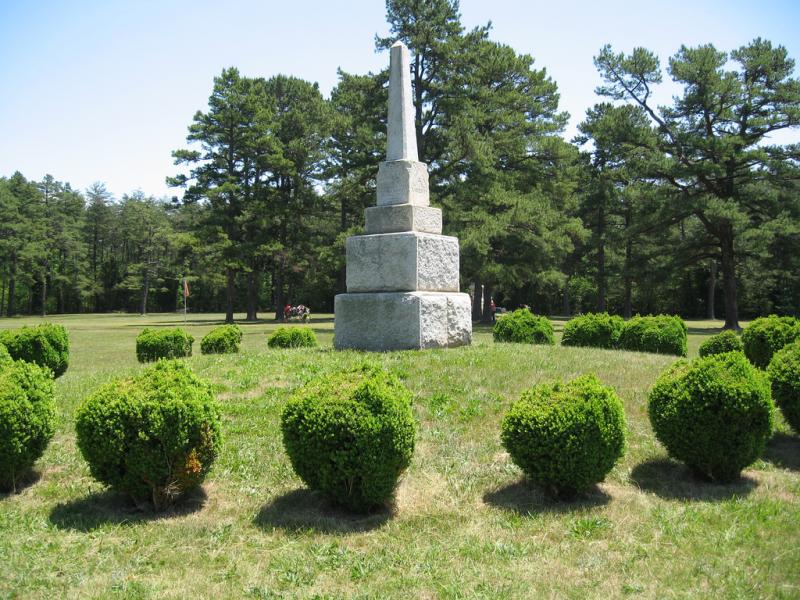Many people in North Carolina were upset with the colonial government before the American Revolution. They accepted the form of government and the colony's laws. But they were frustrated with abuses caused by government officials.
The colonists complained about many issues. These included taxes, dishonest sheriffs, and illegal fees. Lack of money added to the feelings of unrest. Colonists in the east and west did not always understand each other’s beliefs. They did not always share the same values or ideas on how to improve the government. The Regulator Movement began in the western, outermost counties of North Carolina. The western counties were known then as the “backcountry.”
The government and colonists had small clashes until the spring of 1768. Then, an association of "Regulators" was formed. Wealthier colonists considered them to be a mob. The Regulators never had just one leader. There were several important men in the Regulator movement. Some of these men were James Hunter, Rednap Howell, William Butler, and Herman Husband. Husband was a Quaker and follower of Benjamin Franklin. He also circulated political pamphlets calling for peaceful changes.
Violent resistance
Peaceful discussions did not change the colonial government. To create change, the Regulators became more radical over time. They began to use violence and disorder more often. The Regulators refused to pay fees ordered by the government. They also caused chaos for those who upheld royal law. The Regulators also disrupted court proceedings.
It was royal governor William Tryon’s responsibility to stop the uprising. The governor's council advised Tryon to call out the militia, or a group of soldiers, in March 1771. This militia was to march against the rebel colonists.
Tryon mustered, or called for, volunteers for the militia. General Hugh Waddell followed Tryon’s orders and entered Hillsborough through Salisbury. Waddell was in charge of the Cape Fear and western militias. Tryon and his army marched toward Hillsborough. Waddell only had 284 men. He was stopped by a large group of Regulators on his way to Hillsborough. Waddell was outnumbered by the Regulators. He ordered his soldiers to retreat. Governor Tryon and his forces left Hillsborough to rescue Waddell on May 11, 1771. Tryon stopped at the Alamance Creek to organize his army of approximately a thousand men. This creek was in the middle of Regulator country. 2,000 Regulators had gathered about five miles away.
The Battle of Alamance
The Regulators and the militias met near Alamance near modern-day Burlington. Tryon ordered the Regulators to stop protesting and go home peacefully. The Regulators rejected Tryon's suggestion. Tryon and Waddell’s soldiers attacked first, and the battle began on May 16, 1771. The Regulators were no match for Tryon's militia. They did not have proper leadership, organization, and weapons. Many Regulators ran away from the battlefield.
Tryon and his militia crushed the rebellion. Nine members of the royal militia were killed and sixty-one were wounded. The Regulators lost many people but exact numbers are unknown. Tryon took fifteen prisoners; seven were hanged later. Many Regulators moved on to areas beyond North Carolina. Those who stayed were offered a deal. The governor would pardon them if they pledged allegiance, or loyalty, to the royal government. With this, the Regulator movement ended.
The Regulators and their movement showed how upset many people were before the American Revolution. Their actions provided a lesson in the use of armed resistance. Patriots and rebels used these strategies later during the American War for Independence.
Glossary:
- Backcountry: western, outermost counties in colonial North Carolina, like Rowan and Orange
- Militia: soldiers, usually volunteers, that are called upon for service in times of need
- Muster: To call something, usually soldiers, for help or service
- Rebellion: a movement that openly opposes and fights a government
- Allegiance: loyalty to a cause
Guided Reading Questions:
- True or False: Backcountry counties were located in the western part of North Carolina.
- Can you name two men that helped the Regulator Movement?
- Who was the royal governor during the Regulator Movement?
- The Regulators and the royal militia fought on May 16, 1771. What was the name of the battle? Who won?
- What happened to the Regulators after the May 16, 1771 battle?

